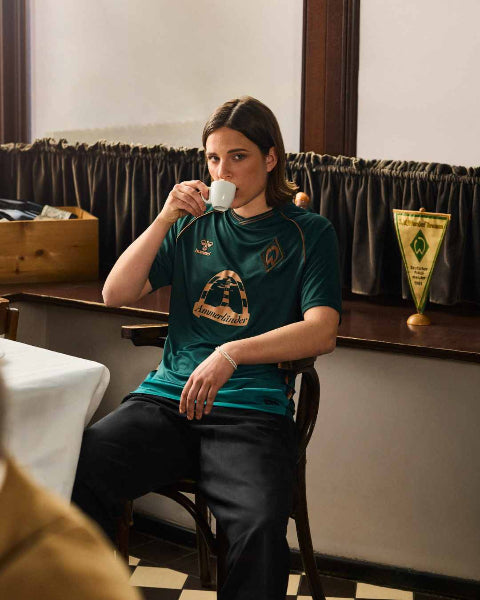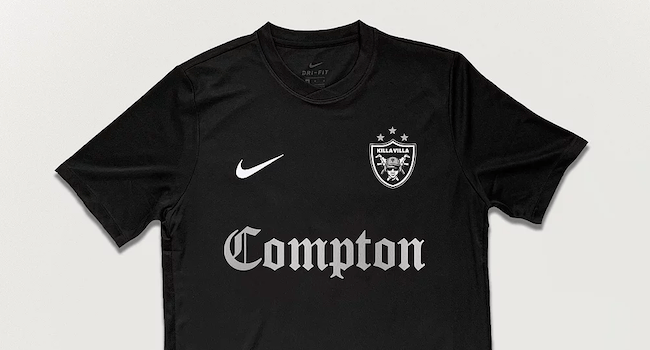Recently added
Vintage shirts
Concept kits
Legends
When will football shirts get cheaper again?
by Phil Delves July 19, 2022 4 min read

When we look back on the start of the 2020s in the context of football shirts, one of the things that will stand out the most is the increase in price when it came to both new and vintage shirts.
We’ve experienced what many people have referred to as a ‘football shirt boom’, with a number of factors driving up the price of kits. From the increasing push from brands and clubs in creating more and more shirts to the growing popularity of shirts as a collectible item, there are no signs of a return to the pre-2018 era where huge bargains could be found on eBay and replicas were, though still expensive, slightly easier to stomach at RRP.
A question I often get asked is “when will football shirts get cheaper again”, and though it’s a tricky one to answer I wanted to tackle it for today’s edition of Collectors Club.
Browse our collection of all vintage football shirt here.
When will football shirt gets cheaper?
Let’s start with the bad news, or at least a negative prediction if you’re concerned about the price of football shirts
I’d expect things to get worse before they get better with regards to the price of new shirts. You only have to look at the numbers when it comes to shirt RRP to realise the bar is being raised higher and higher, even on things like kids shirts.
The Women's Euros, which is underway by the time you’re reading this, brings with it some exciting new, bespoke designs for many of the biggest nations in the world, but you’d have to pay a hefty price to get the top level, player spec/player issue tier of shirts. For example, the latest Dri-Fit ADV England Women’s home shirt in kids sizes retails at £99.95. Last season, the equivalent level of shirts for club sizes varied in price, but most (Barcelona home, PSG home etc.) came in £10 cheaper.
Of course these player issue shirts grab the headlines, as do special edition shirts and the like (more on those shortly), but the price of replica shirts has also been the source of much debate. The 2022/23 Liverpool home shirt retails at £74.95, up £5 from the 2020/21 retail price of the Liverpool home (£69.95) and, if we compare to the early 90s, over double what you’d be paying for a Liverpool shirt in 1992/93 (£29.99).
Are football shirts overpriced?
Interestingly, as reported by writer Ben Hyde in a 2020 article, prices in the modern game are surprisingly similar to what you’d pay in the 90s if you take inflation into account, with a £30 shirt being worth around £62.55 in 2020 if you use the Bank of England’s figure of an average inflation rate of 2.8% for the years 1992-2020.
Three figures for a new kids shirt is extortionate, but that speaks to the ‘issue’ around the emerging player issue end of the market more than it does the base, replica level. Unfortunately, the growing gulf in quality when it comes to replica vs player hurts the situation even further, as does the fact that most shirts are used for one season only before being unceremoniously dumped, unlike most shirts of the 90s and 00s.
Where do we go from here?
This last point touches on what I think could be a solution of sorts for the rising cost of shirts. I wouldn’t expect shirts to get cheaper any time soon, at least from the big brands, but there’s growing optimism amongst the community and wider footballing world that we might see the normalisation once again of shirts being used for multiple seasons.

Brentford’s high profile announcement last season that they would be keeping their 2021/22 home shirt for 2022/23 brought with it a tonne of praise. Though nothing has been confirmed, rumours are swirling that Nike are strongly considering the 2 season model for some of their shirts from next season (2023/24). This is interesting to me for a number of reasons, not least because clubs make so little from the actual physical sales of shirts in the first place. For brands it would be a trickier argument, particularly from a pure financial perspective, but I would argue that the positive PR and sustainability angle would be a big drawer for any of the big names.
Having a new replica retail for upwards of £75 hurts, but if it is being used for two seasons the blow is softened, slightly (you should also consider shopping at the right times to maximise value, but that’s another topic).
Will there be a third tier of football shirts?
As a follow-up point, there’s also the possibility of introducing a 3rd tier into the current market, a tier which has been referred to as ‘basic’ in the past by various clubs. I’ve seen less discussion around this particular area than I have in the area of keeping shirts for multiple years, but some brands do release shirts which are cheaper than replicas with a relatively minor reduction in things like quality and details. These are typically priced under £50, bringing them more in line with where shirts were not so long ago.
Nike have done this with Galatasaray shirts for the past couple of years for example, and bizarrely we also saw this with some national team shirts like Slovenia. Clubs like Barcelona and Benfica have also sold their own basic-tier shirts from club stores, which are even cheaper and comparable to even retro remakes.
Phil Delves
As Head of Content, Phil is the creative playmaker of the team, covering every angle of football shirt news in our blogs and weekly Newsletter. Whether it's telling your fakes from your authentics, or deep dives into the newest football shirts designs, Phil will have all your football shirt content needs covered.
Sidebar
- Premier League football shirts
-
Other English clubs
- Birmingham City
- Blackburn Rovers
- Charlton Athletic
- Coventry City
- Derby County
- Hull City
- Ipswich Town
- Leicester City
- Middlesbrough
- Millwall
- Norwich City
- Portsmouth
- Preston North End
- Queens Park Rangers
- Sheffield United
- Sheffield Wednesday
- Southampton
- Stoke City
- Swansea City
- Watford
- West Bromwich Albion
- Scottish clubs
- Italian club shirts
- Spanish club shirts
- German club shirts
- International
- French club shirts
- Rest of the world
-
Legends
- Adriano
- Alessandro Del Piero
- Andrey Arshavin
- Alvaro Recoba
- Bobby Moore
- Bryan Robson
- Bukayo Saka
- Clarence Seedorf
- Cristian Vieri
- Cristiano Ronaldo
- David Beckham
- David James
- David Seaman
- David Ginola
- Dennis Wise
- Dennis Bergkamp
- Didier Drogba
- Dimitar Berbatov
- Diego Maradona
- Edgar Davids
- Eric Cantona
- Fernando Torres
- Freddie Ljungberg
- Gabriel Batistuta
- Gianluca Vialli
- Gianluigi Buffon
- Giovanni Elber
- Frank Lampard
- Francecso Totti
- Haaland
- Harry Kane
- Hidetoshi Nakata
- Ian Wright
- Jari Litmanen
- Ji Sung Park
- Juninho
- Jurgen Klinsmann
- Kaka
- Landon Donovan
- Lionel Messi
- Lothar Mattaus
- Luis Figo
- Mark Viduka
- Matt Le Tissier
- Mesut Özil
- Michael Owen
- Mikel Arteta
- Neymar
- Nicolas Anelka
- Nwankwo Kanu
- Paolo Di Canio
- Paolo Maldini
- Patrick Vieira
- Rafael Van der Vaart
- Raul
- Riquelme
- Rivaldo
- Robert Pires
- Roberto Baggio
- Robbie Fowler
- Ronaldo Nazario
- Ronaldinho
- Roy Keane
- Rudi Voller
- Ruud Gullit
- Ryan Giggs
- Santi Carzola
- Steve Bull
- Steven Gerrard
- Teddy Sheringham
- Thierry Henry
- Tony Adams
- Toto Schillaci
- Tugay
- Wayne Rooney
- Xabi Alonso
- Zinedine Zidane
- Zola
- Brands
Subscribe
Sign up to get the latest on sales, new releases and more …













